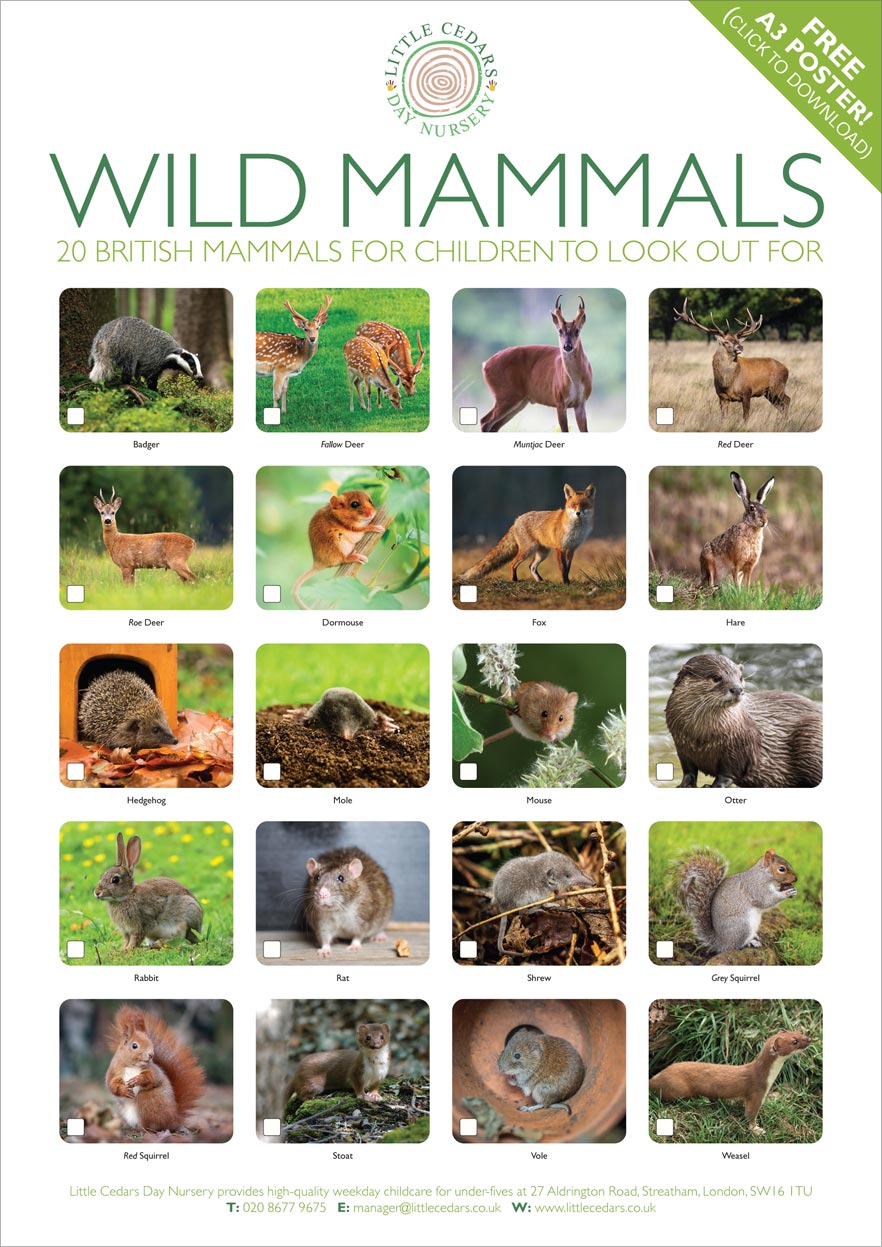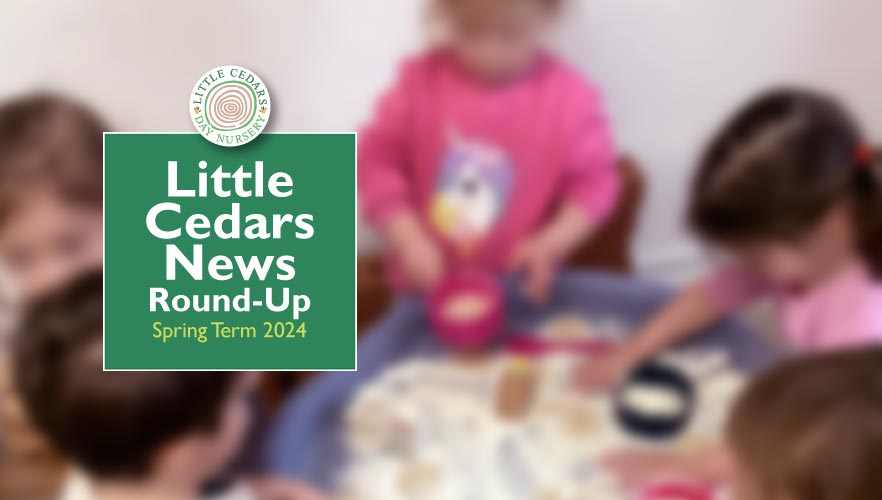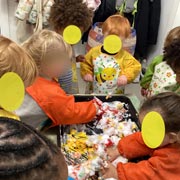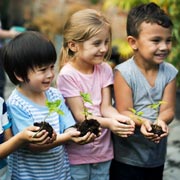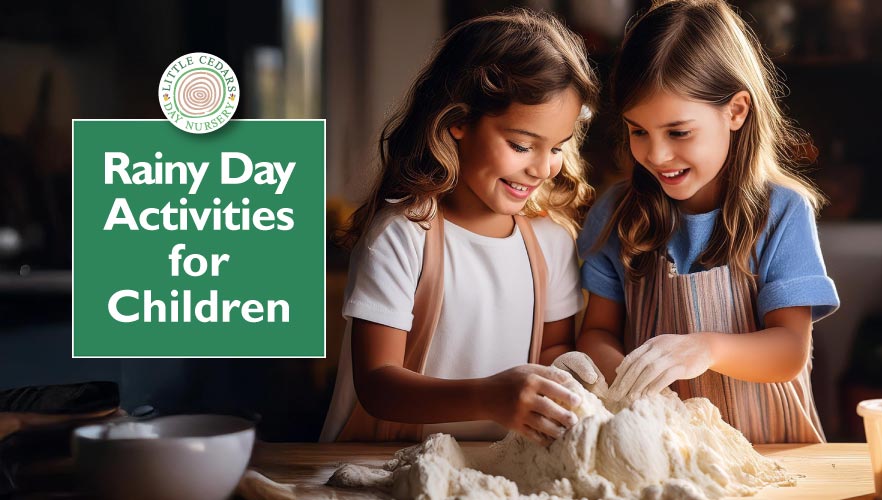
Today we are outlining some fantastic rainy-day activities that will turn an otherwise dull day into an exciting adventure for children. When the weather keeps little ones indoors, it can sometimes be a challenge to keep them entertained without resorting to screen time. Fortunately, there are plenty of fun and engaging rainy-day activities to spark their creativity, encourage movement, and keep boredom at bay — take a look! Perhaps bookmark this post so you have these exciting activity ideas ready for when the weather takes a turn for the worse.
Indoor Adventures & Imaginative Play
Indoor Obstacle Course
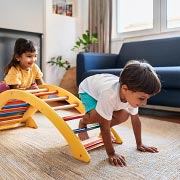 Transform your living room into a mini adventure zone. If you don’t have existing adventure equipment, perhaps use cushions and make tunnels from blankets draped over furniture. You can also create masking tape ‘routes’ on the floor to mark out an exciting course for little ones to navigate, crawl through, jump over, and balance along. You can add a timer to make it a fun race or include challenges like hopping on one foot or crawling backwards. This is a great way to build gross motor skills while having loads of fun.
Transform your living room into a mini adventure zone. If you don’t have existing adventure equipment, perhaps use cushions and make tunnels from blankets draped over furniture. You can also create masking tape ‘routes’ on the floor to mark out an exciting course for little ones to navigate, crawl through, jump over, and balance along. You can add a timer to make it a fun race or include challenges like hopping on one foot or crawling backwards. This is a great way to build gross motor skills while having loads of fun.
Treasure Hunt
 Hide small toys or objects* around the house and give your child simple clues or a checklist to find them. This activity encourages problem-solving and keeps them engaged in an exciting mission. Perhaps introduce themes, for example, a pirate treasure hunt with a ‘treasure map’ or a nature scavenger hunt using items like leaves or toy animals.
Hide small toys or objects* around the house and give your child simple clues or a checklist to find them. This activity encourages problem-solving and keeps them engaged in an exciting mission. Perhaps introduce themes, for example, a pirate treasure hunt with a ‘treasure map’ or a nature scavenger hunt using items like leaves or toy animals.
Den Building
 A few sheets stretched over furniture, with blankets, pillows, and child-safe* LED fairy lights below, can create a cosy hideaway. This can be used for storytelling, imaginative play, or simply a quiet space to relax. Encourage your child to bring their favourite books and stuffed animals inside, to make it their own secret retreat. Den building helps encourage creativity, teamwork, and a sense of independence.
A few sheets stretched over furniture, with blankets, pillows, and child-safe* LED fairy lights below, can create a cosy hideaway. This can be used for storytelling, imaginative play, or simply a quiet space to relax. Encourage your child to bring their favourite books and stuffed animals inside, to make it their own secret retreat. Den building helps encourage creativity, teamwork, and a sense of independence.
Fancy Dress & Role-Play
 Let your little ones dress up as pirates, fairies, princesses, or superheros and encourage them to act out their own stories. Role-playing helps boost their imagination, creativity, and confidence. Provide props like child-safe* toy swords, wands, or kitchen utensils as pretend play items to expand their stories. Acting out different scenarios enhances communication skills and self-expression.
Let your little ones dress up as pirates, fairies, princesses, or superheros and encourage them to act out their own stories. Role-playing helps boost their imagination, creativity, and confidence. Provide props like child-safe* toy swords, wands, or kitchen utensils as pretend play items to expand their stories. Acting out different scenarios enhances communication skills and self-expression.
Creative & Messy Play
Painting with Unusual Tools
 Swap traditional paintbrushes for sponges, cotton pads, or even cut vegetable fingers or potato ‘stamps’. Using unusual tools to apply paint allows children to explore different textures and get creative with their masterpieces. You can also use things like leaves, or child-safe kitchen utensils, to achieve different effects. Let them mix colours and discover new shades while experimenting with new application techniques.
Swap traditional paintbrushes for sponges, cotton pads, or even cut vegetable fingers or potato ‘stamps’. Using unusual tools to apply paint allows children to explore different textures and get creative with their masterpieces. You can also use things like leaves, or child-safe kitchen utensils, to achieve different effects. Let them mix colours and discover new shades while experimenting with new application techniques.
DIY Salt Dough
 Help your child make their own salt dough with flour, salt, and water. Moulding and shaping salt dough is a great sensory and motor skill activity. While supervising children for safety, provide cookie cutters, rolling pins, or stamps so they can make different shapes and imprints. You can also add child-safe food colouring for extra sensory fun.
Help your child make their own salt dough with flour, salt, and water. Moulding and shaping salt dough is a great sensory and motor skill activity. While supervising children for safety, provide cookie cutters, rolling pins, or stamps so they can make different shapes and imprints. You can also add child-safe food colouring for extra sensory fun.
Sticker & Collage Fun
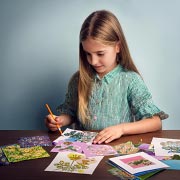 Give your child a mix of stickers, old magazines, and child-safe glue sticks to create their own collage artwork. This is a great way to develop fine motor skills. Set up themes such as Under the Sea or Space Adventure to inspire their creativity. When finished, perhaps display their artwork on the fridge or a wall to encourage pride in their work and nurture their sense of achievement.
Give your child a mix of stickers, old magazines, and child-safe glue sticks to create their own collage artwork. This is a great way to develop fine motor skills. Set up themes such as Under the Sea or Space Adventure to inspire their creativity. When finished, perhaps display their artwork on the fridge or a wall to encourage pride in their work and nurture their sense of achievement.
Big Cardboard Box Creations
 A large cardboard box can become a rocket, a car, or a house with just a little imagination. Provide crayons or water-based markers and stickers for decoration and let their creativity take over. You can cut out* windows, and doors, and even make a steering wheel for them. Encourage storytelling by asking them where their box creation will take them.
A large cardboard box can become a rocket, a car, or a house with just a little imagination. Provide crayons or water-based markers and stickers for decoration and let their creativity take over. You can cut out* windows, and doors, and even make a steering wheel for them. Encourage storytelling by asking them where their box creation will take them.
Science & Sensory Play
Sink or Float Experiments
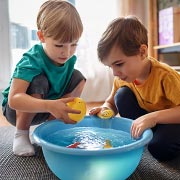 Closely supervising* children for safety, fill a washing-up bowl with water and let them guess whether different objects will sink or float. This simple science experiment is both educational and fun. You can extend the activity by discussing why some things float and others sink, teaching basic physics in an engaging way.
Closely supervising* children for safety, fill a washing-up bowl with water and let them guess whether different objects will sink or float. This simple science experiment is both educational and fun. You can extend the activity by discussing why some things float and others sink, teaching basic physics in an engaging way.
Rainbow Rice or Pasta
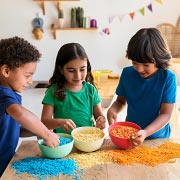 Dye dry rice or pasta with child-safe food colouring for a colourful, ‘scoop-able’ sensory play activity. Once the dye has dried, provide spoons, cups, and small containers for pouring, scooping, and mixing. This activity helps develop fine motor skills while being visually stimulating.
Dye dry rice or pasta with child-safe food colouring for a colourful, ‘scoop-able’ sensory play activity. Once the dye has dried, provide spoons, cups, and small containers for pouring, scooping, and mixing. This activity helps develop fine motor skills while being visually stimulating.
Cloud Dough
 (While supervising children*): mixing flour with baby oil or vegetable oil will create a soft, mouldable cloud dough that feels like wet sand. We suggest 8 parts of flour with 1 part oil. Add a few drops of child-safe food colouring for an extra sensory element. Hide small toys or wooden building blocks inside for children to discover and dig out, adding a treasure-hunting twist to the activity.
(While supervising children*): mixing flour with baby oil or vegetable oil will create a soft, mouldable cloud dough that feels like wet sand. We suggest 8 parts of flour with 1 part oil. Add a few drops of child-safe food colouring for an extra sensory element. Hide small toys or wooden building blocks inside for children to discover and dig out, adding a treasure-hunting twist to the activity.
Ice Excavation
 Freeze fruit like strawberries, orange segments, or suitably sized small toys in ice. Once you have removed them from the freezer, let children “rescue” the fruit and objects from the ice by using warm water and spoons. This activity promotes patience and problem-solving skills with a scientific twist. You can add child-safe food colouring to the water before freezing for a more visually engaging experience.
Freeze fruit like strawberries, orange segments, or suitably sized small toys in ice. Once you have removed them from the freezer, let children “rescue” the fruit and objects from the ice by using warm water and spoons. This activity promotes patience and problem-solving skills with a scientific twist. You can add child-safe food colouring to the water before freezing for a more visually engaging experience.
Cooking & Baking Fun
Make Your Own Pizzas
 Provide ready-made bases, tomato sauce, cheese, and toppings for kids to assemble* their own mini pizzas. Encourage them to arrange toppings into faces, pictures, or patterns, making the activity both fun and delicious.
Provide ready-made bases, tomato sauce, cheese, and toppings for kids to assemble* their own mini pizzas. Encourage them to arrange toppings into faces, pictures, or patterns, making the activity both fun and delicious.
Decorate Biscuits
 Applying icing and sprinkles to cookies or biscuits makes for a fun and tasty decorating activity. Let children experiment with different patterns and colour combinations, encouraging creativity and hand-eye coordination.
Applying icing and sprinkles to cookies or biscuits makes for a fun and tasty decorating activity. Let children experiment with different patterns and colour combinations, encouraging creativity and hand-eye coordination.
Milkshake or Smoothie Making
 Let children choose their ingredients and blend* fruit with milk or yoghurt to make delicious and nutritious drinks. If they’re old enough, are closely supervised, and it’s safe for them to do so, let them help with mixing. Once the smoothie mix is ready, use fun paper straws or cups to make it feel like a special treat.
Let children choose their ingredients and blend* fruit with milk or yoghurt to make delicious and nutritious drinks. If they’re old enough, are closely supervised, and it’s safe for them to do so, let them help with mixing. Once the smoothie mix is ready, use fun paper straws or cups to make it feel like a special treat.
Music & Movement
Dance Party
 Play your children’s favourite tunes and have a dance-off! A dance party is great for burning off extra energy indoors and it’s immense fun. Children can swirl paper ribbons or strands of coloured tissue paper for added fun and movement when they dance. Dancing helps children stay fit and is also good for honing coordination, balance, and motor skills.
Play your children’s favourite tunes and have a dance-off! A dance party is great for burning off extra energy indoors and it’s immense fun. Children can swirl paper ribbons or strands of coloured tissue paper for added fun and movement when they dance. Dancing helps children stay fit and is also good for honing coordination, balance, and motor skills.
Musical Statues or Musical Chairs
 Musical statues and musical chairs are classic games that never fail to bring laughter and excitement to a rainy day. Add fun challenges like dancing in slow motion or pretending to dance like a robot and it’s sure to be a big hit with kids!
Musical statues and musical chairs are classic games that never fail to bring laughter and excitement to a rainy day. Add fun challenges like dancing in slow motion or pretending to dance like a robot and it’s sure to be a big hit with kids!
Home-made Instruments
 Create shakers using rice or dried pasta in bottles — or use pots and pans as drums, perhaps using a wooden spoon. Encourage your child to form their own mini band. Different materials and a range of cardboard boxes or Tupperware-style tubs will allow children to experiment with a variety of possible sounds. It’s very creative!
Create shakers using rice or dried pasta in bottles — or use pots and pans as drums, perhaps using a wooden spoon. Encourage your child to form their own mini band. Different materials and a range of cardboard boxes or Tupperware-style tubs will allow children to experiment with a variety of possible sounds. It’s very creative!
Rainy days don’t have to mean boredom or resorting to electronic screens for entertainment. With a little creativity, you can turn a grey day into an opportunity for fun, learning, adventure, and bonding. Whether your child loves arts and crafts, energetic activities, or sensory play, there’s something here for everyone. So the next time the rain pours down, try out some of these rainy-day activities and make indoor play just as exciting as the great outdoors!
Nursery Places at Little Cedars Nursery, Streatham

 Little Cedars is a wonderful nursery in Streatham in London SW16. Here, babies, toddlers, and children under five are nurtured and given all the opportunities they need to grow as individuals and absolutely flourish. It’s a warm, welcoming environment where they have fun, are safe and feel valued. Each child has a Key Person who, along with other team members, ensures they have all the tools they need to excel and achieve personal bests in every area of their learning and development. In this way, they will be primed and prepared to thrive from the moment they leave Little Cedars to begin school.
Little Cedars is a wonderful nursery in Streatham in London SW16. Here, babies, toddlers, and children under five are nurtured and given all the opportunities they need to grow as individuals and absolutely flourish. It’s a warm, welcoming environment where they have fun, are safe and feel valued. Each child has a Key Person who, along with other team members, ensures they have all the tools they need to excel and achieve personal bests in every area of their learning and development. In this way, they will be primed and prepared to thrive from the moment they leave Little Cedars to begin school.
As a nursery in Streatham, we will also be a convenient choice for those looking for nurseries near Streatham Common, Streatham Hill, Streatham Park, Tooting Common, Tooting, Tooting Broadway, Furzedown, Balham, Norbury and Colliers Wood. Get in touch today to arrange a guided visit with your child or ask any questions. We’re here to help!
* N.B. Supervise children and ensure they avoid anything dangerous, including possible choking hazards, button batteries, heat sources, trip hazards, sharp objects, etc. Also ensure that children wash hands and fingers thoroughly after activities, especially those involving food, oil, dye, leaves, etc.



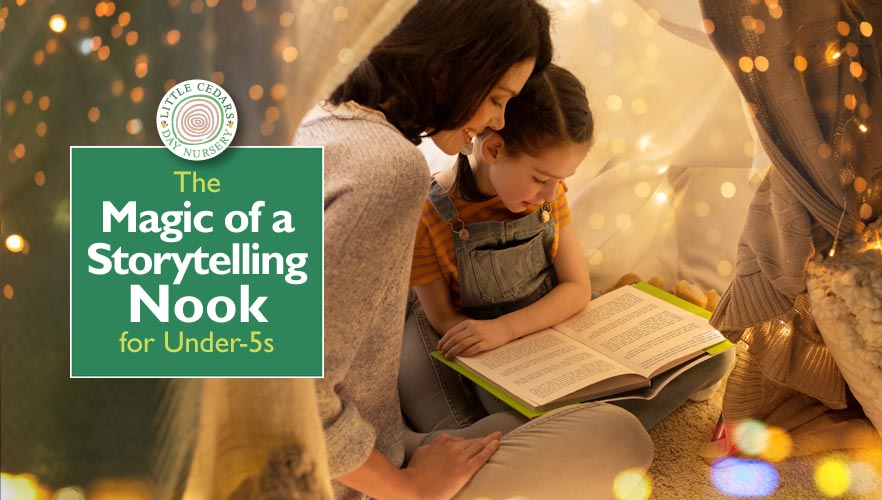
 Any successful storytelling nook needs to be warm, cosy, quiet and comfortable. That means choosing a corner or recess of some kind in the home that’s away from distractions like TVs and game consoles. Somewhere that’s not used as a thoroughfare by other family members will also help. Wherever you choose, it also needs to be warm. Therefore, somewhere away from draughts is required, so avoid being too close to entrances and exits to the outside. A corner of a quiet room or a tranquil alcove are therefore often ideal spots for your child’s storytelling nook.
Any successful storytelling nook needs to be warm, cosy, quiet and comfortable. That means choosing a corner or recess of some kind in the home that’s away from distractions like TVs and game consoles. Somewhere that’s not used as a thoroughfare by other family members will also help. Wherever you choose, it also needs to be warm. Therefore, somewhere away from draughts is required, so avoid being too close to entrances and exits to the outside. A corner of a quiet room or a tranquil alcove are therefore often ideal spots for your child’s storytelling nook. Whether reading from a book or creating a new story off the top of one’s head, there’s something that really brings a story to life — being animated and expressive during storytelling, rather like actors might do. That’s true whether it’s the adult or the child telling the story.
Whether reading from a book or creating a new story off the top of one’s head, there’s something that really brings a story to life — being animated and expressive during storytelling, rather like actors might do. That’s true whether it’s the adult or the child telling the story. Do consider adding a storytelling nook or reading corner to your child’s home. They’re great vehicles for escapism, are incredibly worthwhile, and offer potentially magical experiences for your child. And, if you go the extra mile to make them cosy, immersive and special, they will encourage your child to love reading and creating new adventures using their imagination. Storytelling nooks and reading corners can open up whole new worlds to your child and be a wonderful antidote to electronic screens, gloomy weather, and more limited daylight during winter months. What’s more, they’re a great way for all parties to grow deeper bonds through shared periods of exquisitely immersive, high-quality time.
Do consider adding a storytelling nook or reading corner to your child’s home. They’re great vehicles for escapism, are incredibly worthwhile, and offer potentially magical experiences for your child. And, if you go the extra mile to make them cosy, immersive and special, they will encourage your child to love reading and creating new adventures using their imagination. Storytelling nooks and reading corners can open up whole new worlds to your child and be a wonderful antidote to electronic screens, gloomy weather, and more limited daylight during winter months. What’s more, they’re a great way for all parties to grow deeper bonds through shared periods of exquisitely immersive, high-quality time.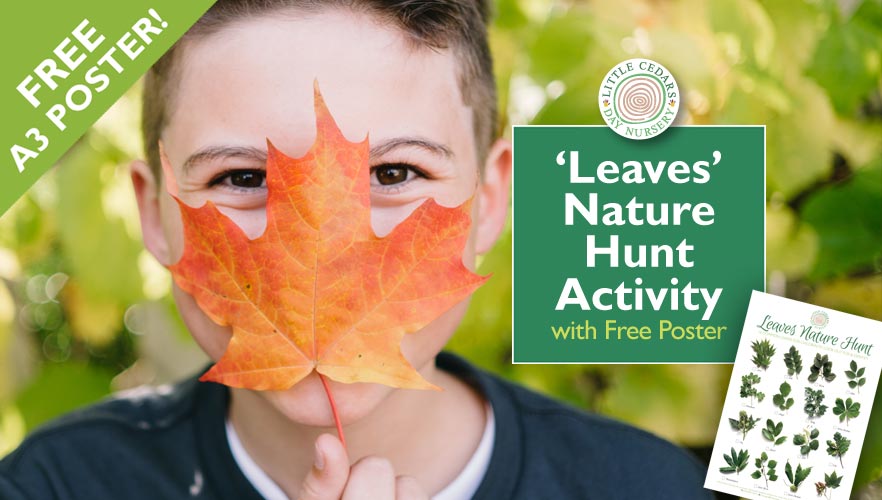
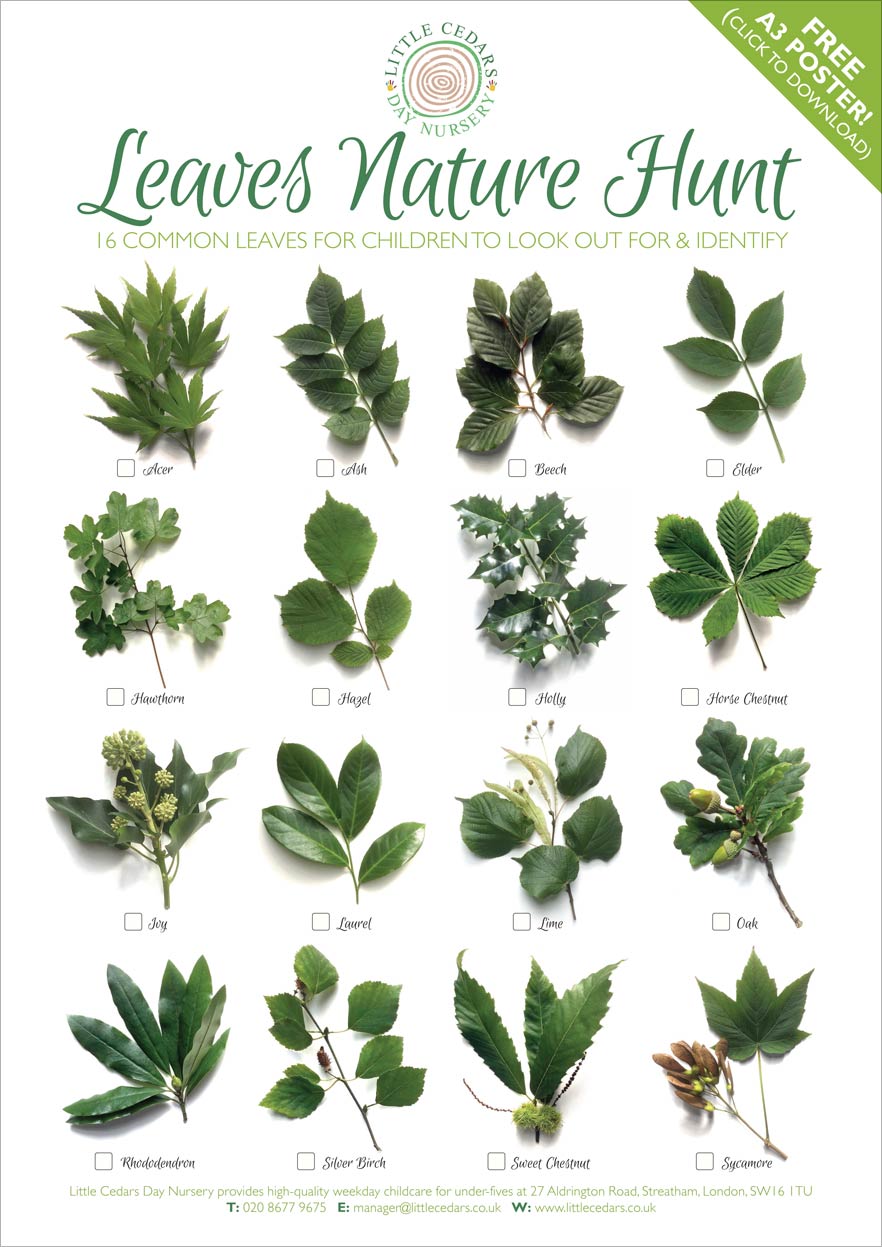
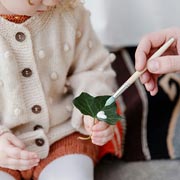

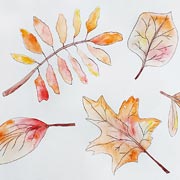


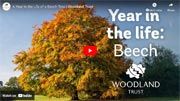
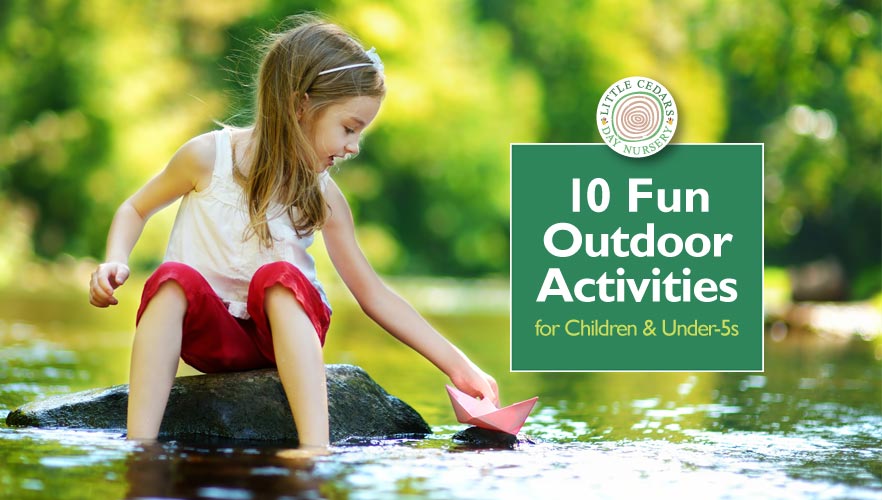
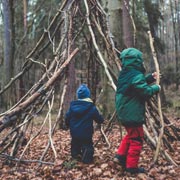 Home-made play dens are great fun both to construct and to use. Children will love constructing them, perhaps using fallen branches, sticks, or garden bamboo canes. If they show real ‘bush craft’ potential, they could even progress to covering them with large leaves, moss, fir tree fronds, or simply use a spare blanket or sheet from indoors. Once made, children will adore setting up camp, perhaps with cushions or soft moss, straw, or hay, used as a comfy base inside. Once built, their imaginations will run riot as they invent all kinds of games, role-play scenarios, and free-form play. This creative activity is such fun and has so much potential!
Home-made play dens are great fun both to construct and to use. Children will love constructing them, perhaps using fallen branches, sticks, or garden bamboo canes. If they show real ‘bush craft’ potential, they could even progress to covering them with large leaves, moss, fir tree fronds, or simply use a spare blanket or sheet from indoors. Once made, children will adore setting up camp, perhaps with cushions or soft moss, straw, or hay, used as a comfy base inside. Once built, their imaginations will run riot as they invent all kinds of games, role-play scenarios, and free-form play. This creative activity is such fun and has so much potential!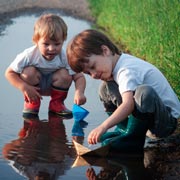 With a little help from an adult or using suitable reference from the Internet or a book, children will be able to
With a little help from an adult or using suitable reference from the Internet or a book, children will be able to 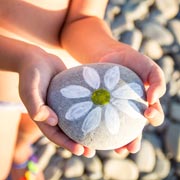
 Rocks, particularly the smooth pebble kind, are often magnets for children’s attention when they spot them outdoors. Parents and carers can encourage children to take their natural interest a few steps further by creating rock art and rock sculpture (using, of course, suitable rocks that are safe for them to use under supervision). Children will love painting rocks with patterns, flowers, or abstract designs and these can look hugely attractive. Rock sculptures are also something that children will love building, whether using painted rocks or natural ones. Scenes with multiple ‘towers’ of piled rocks look magical and children can even pretend these are part of their ‘castle’ or mark the boundaries of their kingdom and suchlike. Creating outdoors with rocks will be fun and creative, it’ll stimulate imaginations, and also hone art and motor skills.
Rocks, particularly the smooth pebble kind, are often magnets for children’s attention when they spot them outdoors. Parents and carers can encourage children to take their natural interest a few steps further by creating rock art and rock sculpture (using, of course, suitable rocks that are safe for them to use under supervision). Children will love painting rocks with patterns, flowers, or abstract designs and these can look hugely attractive. Rock sculptures are also something that children will love building, whether using painted rocks or natural ones. Scenes with multiple ‘towers’ of piled rocks look magical and children can even pretend these are part of their ‘castle’ or mark the boundaries of their kingdom and suchlike. Creating outdoors with rocks will be fun and creative, it’ll stimulate imaginations, and also hone art and motor skills. Children will love creating their own picnic, whether it’s in the garden, local park, or out in the countryside. It’s a multi-faceted activity where they can first help prepare the food and drink, help pack it in backpacks or a cool bag, and then settle somewhere pleasant outdoors. There, they can set up camp, perhaps with a nice soft blanket to sit on, and lay out their picnic feast. It’ll be a great spot, too, to relax with friends or family, or use as a base from which to embark on other outdoor games and activities. Picnics are also a great way to extend the time children can spend outdoors because they’ll be fed and watered outside too. Magical!
Children will love creating their own picnic, whether it’s in the garden, local park, or out in the countryside. It’s a multi-faceted activity where they can first help prepare the food and drink, help pack it in backpacks or a cool bag, and then settle somewhere pleasant outdoors. There, they can set up camp, perhaps with a nice soft blanket to sit on, and lay out their picnic feast. It’ll be a great spot, too, to relax with friends or family, or use as a base from which to embark on other outdoor games and activities. Picnics are also a great way to extend the time children can spend outdoors because they’ll be fed and watered outside too. Magical! Introduce children to the concept of rambling. It’s a term that also sounds much more interesting than ‘walking’ in any case, and is a great excuse to get little ones out and about, for example, in the countryside, local park, or green space. Rambling out in nature is good for children (and adults) and also presents lots of exciting opportunities for adventure for little ones. Whether it’s a fallen log that children can try to walk along, tree stumps that they can balance on, branches they can try to hang from by their arms, or little brooks and ditches that they can jump across, rambles can be wonderful adventures for children — under adult supervision, of course. They’re also great ways to stimulate imaginations as children can pretend they’re explorers, pirates, hobbits, and so on.
Introduce children to the concept of rambling. It’s a term that also sounds much more interesting than ‘walking’ in any case, and is a great excuse to get little ones out and about, for example, in the countryside, local park, or green space. Rambling out in nature is good for children (and adults) and also presents lots of exciting opportunities for adventure for little ones. Whether it’s a fallen log that children can try to walk along, tree stumps that they can balance on, branches they can try to hang from by their arms, or little brooks and ditches that they can jump across, rambles can be wonderful adventures for children — under adult supervision, of course. They’re also great ways to stimulate imaginations as children can pretend they’re explorers, pirates, hobbits, and so on.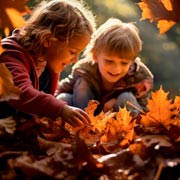
 Children will also hugely enjoy making and then competing in their own obstacle race. Encourage them to set up a route through a suitable clearing, forest, field or park. Get them to mark boundaries and the course route with natural objects (sticks, rocks, stones, jumpers, etc.). Include obstacles like branches to jump over, tree trunks to run around, ditches or other similar hazards to jump over, and so on. Perhaps they can race several times and you, as the supervising adult, can time them. Whoever wins could be presented with a prize of some kind, whether it’s a purchased toy or simply a gold star sticker. It’ll be a great chance for children to let off steam, keep fit, and hone balance, coordination and motor skills.
Children will also hugely enjoy making and then competing in their own obstacle race. Encourage them to set up a route through a suitable clearing, forest, field or park. Get them to mark boundaries and the course route with natural objects (sticks, rocks, stones, jumpers, etc.). Include obstacles like branches to jump over, tree trunks to run around, ditches or other similar hazards to jump over, and so on. Perhaps they can race several times and you, as the supervising adult, can time them. Whoever wins could be presented with a prize of some kind, whether it’s a purchased toy or simply a gold star sticker. It’ll be a great chance for children to let off steam, keep fit, and hone balance, coordination and motor skills. Little ones are usually familiar with the concept of photographs, especially in today’s age, with cameras on every smartphone and tablet. And, of course, there are still simple stand-alone cameras available, whether digital or using traditional film. Either way, suggest that children — with care not to break or damage the device — take photos of natural things and scenery when they’re outdoors. There could even be a competition to see who can take the best photo of a flower, insect, or scene of some kind. This activity will stimulate their creativity, encourage an understanding of scientific concepts like light and shadows, and give them a sense of responsibility as they (hopefully) look after the camera or smartphone itself. Prizes or stickers could perhaps be available for the most successful and appealing shots.
Little ones are usually familiar with the concept of photographs, especially in today’s age, with cameras on every smartphone and tablet. And, of course, there are still simple stand-alone cameras available, whether digital or using traditional film. Either way, suggest that children — with care not to break or damage the device — take photos of natural things and scenery when they’re outdoors. There could even be a competition to see who can take the best photo of a flower, insect, or scene of some kind. This activity will stimulate their creativity, encourage an understanding of scientific concepts like light and shadows, and give them a sense of responsibility as they (hopefully) look after the camera or smartphone itself. Prizes or stickers could perhaps be available for the most successful and appealing shots.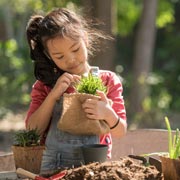 Children will love having their own mini garden. Whether it’s a small area in the household garden or simply some flowerpots or grow-bags on a windowsill or patio, there is always somewhere a child can grow plants (or even vegetables or herbs) in a household. All they need is some light, soil, and water, after all. And, of course, the care and attention of someone to look after them. Children will naturally be fascinated by the concept of growing plants, flowers, herbs, vegetables, or fruit from seeds or seedlings. Tending to them and seeing them successfully grow will also give them a sense of responsibility, achievement, and perhaps even of empathy. Children can learn so much from tending to plants.
Children will love having their own mini garden. Whether it’s a small area in the household garden or simply some flowerpots or grow-bags on a windowsill or patio, there is always somewhere a child can grow plants (or even vegetables or herbs) in a household. All they need is some light, soil, and water, after all. And, of course, the care and attention of someone to look after them. Children will naturally be fascinated by the concept of growing plants, flowers, herbs, vegetables, or fruit from seeds or seedlings. Tending to them and seeing them successfully grow will also give them a sense of responsibility, achievement, and perhaps even of empathy. Children can learn so much from tending to plants. Our final outdoor activity idea for children is wildlife spotting. Whether it’s
Our final outdoor activity idea for children is wildlife spotting. Whether it’s 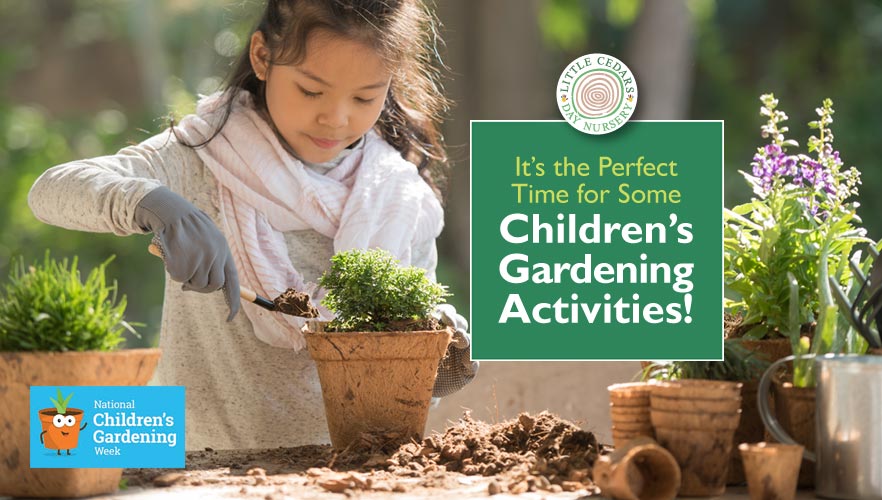
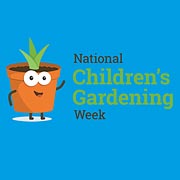 National Children’s Gardening Week takes place each year in the UK during what’s known as the ‘warm week’ beginning right at the end of May. This year (2024) it spans from 25 May to 2 June. However, children can get involved in gardening well outside of those dates*, of course.
National Children’s Gardening Week takes place each year in the UK during what’s known as the ‘warm week’ beginning right at the end of May. This year (2024) it spans from 25 May to 2 June. However, children can get involved in gardening well outside of those dates*, of course.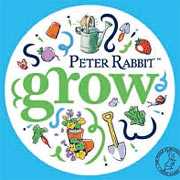 This year (2024), National Children’s Gardening Week has teamed up with The World of Peter Rabbit and is encouraging children and their families to Grow With Peter Rabbit!
This year (2024), National Children’s Gardening Week has teamed up with The World of Peter Rabbit and is encouraging children and their families to Grow With Peter Rabbit! 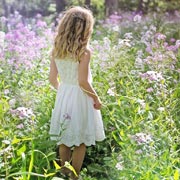
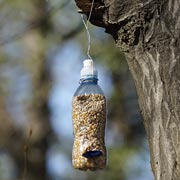 Did you know, there are some incredibly
Did you know, there are some incredibly 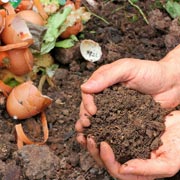
 Compost heaps are also wonderful homes for minibeasts, which are also fun and educational for children to spot. Use our previously published
Compost heaps are also wonderful homes for minibeasts, which are also fun and educational for children to spot. Use our previously published 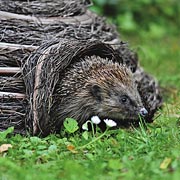 So, making a wildlife-friendly garden or area is a very worthwhile activity for children to take part in — and is educational on so many levels. See
So, making a wildlife-friendly garden or area is a very worthwhile activity for children to take part in — and is educational on so many levels. See 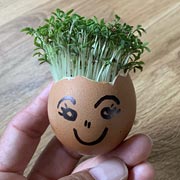 Children can do ‘gardening’ activities indoors too! Get them to
Children can do ‘gardening’ activities indoors too! Get them to 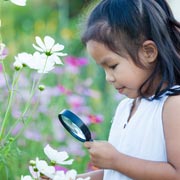 The benefits of gardening for children are many and varied and that’s why it’s such a wonderful activity to get them involved in. It will teach children many new skills and new knowledge. It’ll teach them about the circle of life, how to care and be responsible for other living things, and about the importance of looking after the planet. It will also give them an insight into where some food types come from. It is also great fun, will give children a huge sense of achievement, and may even open their eyes to the possibility of careers in horticulture, land management, food production, farming, and the like. And, of course, gardening makes the world a better place in so many ways. Let’s also not forget that
The benefits of gardening for children are many and varied and that’s why it’s such a wonderful activity to get them involved in. It will teach children many new skills and new knowledge. It’ll teach them about the circle of life, how to care and be responsible for other living things, and about the importance of looking after the planet. It will also give them an insight into where some food types come from. It is also great fun, will give children a huge sense of achievement, and may even open their eyes to the possibility of careers in horticulture, land management, food production, farming, and the like. And, of course, gardening makes the world a better place in so many ways. Let’s also not forget that 
 As we previously reported,
As we previously reported, 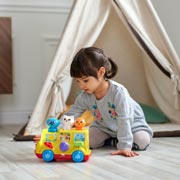 One of the ways you can optimise the success of any indoor play is to set aside a dedicated and safe play area or room for your child. Here, you can ensure that children have the space and tools available for stimulating play when needed, and quieter play at other times. Age-appropriate toys, books, and equipment are, of course, the first prerequisite for such an area. However, you may also consider other elements such as a quiet storytelling/reading corner, a play den or teepee, a relaxation area with cushions and blankets, a creative section with art and craft supplies, a play kitchen or play tools section, and so on. Giving your child such a space is sure to encourage them to immerse themselves in their play activities. And, as we know, children learn best through play.
One of the ways you can optimise the success of any indoor play is to set aside a dedicated and safe play area or room for your child. Here, you can ensure that children have the space and tools available for stimulating play when needed, and quieter play at other times. Age-appropriate toys, books, and equipment are, of course, the first prerequisite for such an area. However, you may also consider other elements such as a quiet storytelling/reading corner, a play den or teepee, a relaxation area with cushions and blankets, a creative section with art and craft supplies, a play kitchen or play tools section, and so on. Giving your child such a space is sure to encourage them to immerse themselves in their play activities. And, as we know, children learn best through play. As well as giving children the tools for imaginative and educational play at home, your proactive input will also boost the benefits they receive from such activities. So, get involved, lead them sometimes and at other times let them lead. They’ll discover and learn more in this way. Ask and answer questions, encourage them to be creative in their thinking and physical approach and highlight aspects and elements that they may not otherwise have been aware of. Such an approach can teach children so much. It may well also deepen the bond between you.
As well as giving children the tools for imaginative and educational play at home, your proactive input will also boost the benefits they receive from such activities. So, get involved, lead them sometimes and at other times let them lead. They’ll discover and learn more in this way. Ask and answer questions, encourage them to be creative in their thinking and physical approach and highlight aspects and elements that they may not otherwise have been aware of. Such an approach can teach children so much. It may well also deepen the bond between you. There are many types of play at home that can involve role-play, which is a powerful tool for learning. Role-play allows children to immerse themselves deeply into the game, story, or scenario they are acting out. As such it greatly boosts young imaginations and stimulates creativity skills. So, encourage such activities as dressing up in costumes, acting, and putting on pretend voices to embody characters. You and your child can take this a step further through the setting up of play equipment or props to create a new play scenario, for example, a play den, cave, pretend kitchen, or castle. Children will have immense fun whilst also learning huge amounts from such creative and imaginative activities.
There are many types of play at home that can involve role-play, which is a powerful tool for learning. Role-play allows children to immerse themselves deeply into the game, story, or scenario they are acting out. As such it greatly boosts young imaginations and stimulates creativity skills. So, encourage such activities as dressing up in costumes, acting, and putting on pretend voices to embody characters. You and your child can take this a step further through the setting up of play equipment or props to create a new play scenario, for example, a play den, cave, pretend kitchen, or castle. Children will have immense fun whilst also learning huge amounts from such creative and imaginative activities. Role-playing can also be brought into time spent reading with your child.
Role-playing can also be brought into time spent reading with your child.  While electronic screens have their occasional place in the education and entertainment of families, it’s healthy to ensure your child has regular screen-free time. Partaking in active play at home — rather than staring inactively at a screen — can only be a good thing, in so many ways. Social skills will be better when children are actively involved in physical play with others. Motor skills and fitness will also benefit. Creativity levels will go through the roof too when children play in real life. They will also learn so much about the world, everything around them and the endless possibilities available to them by playing in the real world. Ensuring children get access to such benefits and opportunities by switching off smartphones, TVs, tablets and game consoles is something every parent can easily do for their child. Doing so will allow for more traditional play, which will enrich their lives in an infinite number of ways.
While electronic screens have their occasional place in the education and entertainment of families, it’s healthy to ensure your child has regular screen-free time. Partaking in active play at home — rather than staring inactively at a screen — can only be a good thing, in so many ways. Social skills will be better when children are actively involved in physical play with others. Motor skills and fitness will also benefit. Creativity levels will go through the roof too when children play in real life. They will also learn so much about the world, everything around them and the endless possibilities available to them by playing in the real world. Ensuring children get access to such benefits and opportunities by switching off smartphones, TVs, tablets and game consoles is something every parent can easily do for their child. Doing so will allow for more traditional play, which will enrich their lives in an infinite number of ways.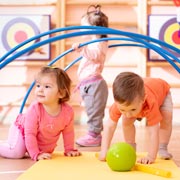 Toys that allow open-ended play are the toys that young children will usually learn the most from. For example, allowing your child to play with building blocks and materials for arts and crafts will let your child’s imagination run riot. Through these, they will be able to create an infinite range of scenarios and possibilities. Dolls and action figures are also good examples that will allow children to immerse themselves in open-ended play, with you there to help expand those possibilities, scenarios and learning opportunities even further.
Toys that allow open-ended play are the toys that young children will usually learn the most from. For example, allowing your child to play with building blocks and materials for arts and crafts will let your child’s imagination run riot. Through these, they will be able to create an infinite range of scenarios and possibilities. Dolls and action figures are also good examples that will allow children to immerse themselves in open-ended play, with you there to help expand those possibilities, scenarios and learning opportunities even further.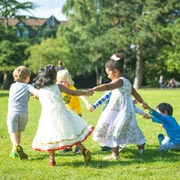 It doesn’t have to be just you and your child playing. Siblings and your child’s peers can also be encouraged to join in. Consider inviting your little one’s friends to your home or local park for a play date. Getting your child’s friends and peers together for group play will allow your child to learn and hone social skills like cooperation, teamwork, leadership, sharing and potentially even conflict resolution. And, with you there to oversee the group session, you can be sure that home play will be fulfilling, organised, fair and rewarding for all who take part.
It doesn’t have to be just you and your child playing. Siblings and your child’s peers can also be encouraged to join in. Consider inviting your little one’s friends to your home or local park for a play date. Getting your child’s friends and peers together for group play will allow your child to learn and hone social skills like cooperation, teamwork, leadership, sharing and potentially even conflict resolution. And, with you there to oversee the group session, you can be sure that home play will be fulfilling, organised, fair and rewarding for all who take part. Remember that you can facilitate learning through play outdoors with your child too. Whether in the garden, park or countryside, playing outdoors gives children a vast number of learning opportunities — and it’s great fun! By accompanying children outdoors, they can naturally explore and discover — and enjoy doing so in ways that are much more free than when playing indoors. Outdoor play is a feast for the senses, it will encourage the honing of physical skills like balance, coordination, motor skills and strength as well as fitness. Playing in the natural world is also incredibly good for children’s mental well-being and holistic development. Learn more about
Remember that you can facilitate learning through play outdoors with your child too. Whether in the garden, park or countryside, playing outdoors gives children a vast number of learning opportunities — and it’s great fun! By accompanying children outdoors, they can naturally explore and discover — and enjoy doing so in ways that are much more free than when playing indoors. Outdoor play is a feast for the senses, it will encourage the honing of physical skills like balance, coordination, motor skills and strength as well as fitness. Playing in the natural world is also incredibly good for children’s mental well-being and holistic development. Learn more about 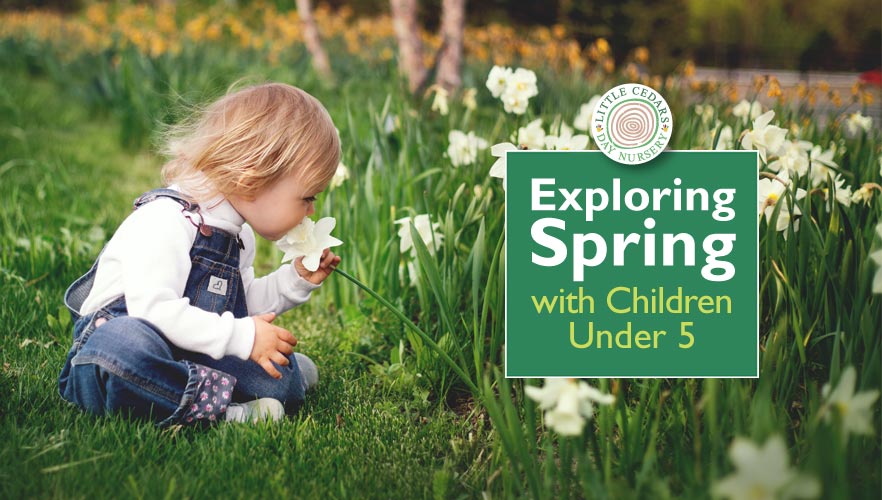
 At Little Cedars Nursery, Streatham, one of the activities we do with children around this time of year is to explore the season of spring. Spring is a wonderful antidote to the cold, winter months as new shoots begin to sprout from the soil, flowers start to reappear, birds begin to return from warmer climes and there are early indications of warmer weather ahead. Paying attention to such things when spring arrives can teach children a great deal about the world around them, nature, and the impact of the various seasons. It’s also a free, fascinating, and educational activity that parents/guardians can do with children. Families can, for example, explore the signs of spring in the garden, out on walks, in local parks, and in the countryside. With that in mind, today’s article looks at the type of things children and families can look out for during the season of spring.
At Little Cedars Nursery, Streatham, one of the activities we do with children around this time of year is to explore the season of spring. Spring is a wonderful antidote to the cold, winter months as new shoots begin to sprout from the soil, flowers start to reappear, birds begin to return from warmer climes and there are early indications of warmer weather ahead. Paying attention to such things when spring arrives can teach children a great deal about the world around them, nature, and the impact of the various seasons. It’s also a free, fascinating, and educational activity that parents/guardians can do with children. Families can, for example, explore the signs of spring in the garden, out on walks, in local parks, and in the countryside. With that in mind, today’s article looks at the type of things children and families can look out for during the season of spring.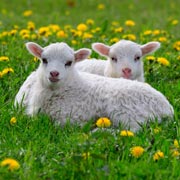 As every child knows, young lambs are an absolute delight. They’re incredibly cute and the way they play, group together with fellow lambs, and happily jump into the air is simply adorable! Although timing varies from farm to farm, most newborn lambs arrive during early spring — typically in March — with others arriving in April, particularly if they’re in UK areas further north where it can be colder. At Little Cedars Nursery, we try to ensure children get to meet some spring lambs or calves each year and it’s always a huge hit with the children.
As every child knows, young lambs are an absolute delight. They’re incredibly cute and the way they play, group together with fellow lambs, and happily jump into the air is simply adorable! Although timing varies from farm to farm, most newborn lambs arrive during early spring — typically in March — with others arriving in April, particularly if they’re in UK areas further north where it can be colder. At Little Cedars Nursery, we try to ensure children get to meet some spring lambs or calves each year and it’s always a huge hit with the children. Another huge hit with children in spring is the appearance of frogspawn in ponds. Children will love watching the little eggs change over time, their contents growing from tiny black dots into creatures that have obvious legs, tails and heads. And, once they emerge from the eggs, the tadpoles continue to delight little ones as they gradually develop into tiny frogs. It’s a wonderfully magical thing for children to witness in spring and is also hugely educational.
Another huge hit with children in spring is the appearance of frogspawn in ponds. Children will love watching the little eggs change over time, their contents growing from tiny black dots into creatures that have obvious legs, tails and heads. And, once they emerge from the eggs, the tadpoles continue to delight little ones as they gradually develop into tiny frogs. It’s a wonderfully magical thing for children to witness in spring and is also hugely educational. Snowdrops are one of the very first plants to reappear when spring arrives. They’re pretty little plants with slender green leaves and flowers that, as their name suggests, resemble delicate drops of snow. Young children will love that! Look out for them in gardens, parks, forests and hedgerows. Each plant generally forms a ‘bunch’ of around ten stems and they reappear every year. Warn children to look but not touch, though, as they are poisonous if eaten.
Snowdrops are one of the very first plants to reappear when spring arrives. They’re pretty little plants with slender green leaves and flowers that, as their name suggests, resemble delicate drops of snow. Young children will love that! Look out for them in gardens, parks, forests and hedgerows. Each plant generally forms a ‘bunch’ of around ten stems and they reappear every year. Warn children to look but not touch, though, as they are poisonous if eaten. Another of the earliest plants to appear in the year is daffodils. Their shoots begin to appear through the soil in February and, once spring arrives in March, their flowers will brighten up any garden, lawn, forest or flower bed right into May. Once daffodils are in bloom, you also know other plants will soon follow. So, they’re a great sign of the changing season for children to look out for, and a signal that gloomy winter is now over and summer is not far away.
Another of the earliest plants to appear in the year is daffodils. Their shoots begin to appear through the soil in February and, once spring arrives in March, their flowers will brighten up any garden, lawn, forest or flower bed right into May. Once daffodils are in bloom, you also know other plants will soon follow. So, they’re a great sign of the changing season for children to look out for, and a signal that gloomy winter is now over and summer is not far away.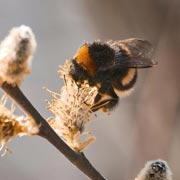 Bumblebees are amongst the cutest of garden visitors and many children will naturally love them, particularly once they’ve realised how adorable they are with their velvety bodies, sweet faces and attractive markings. They’re also peaceful little creatures, many of whom don’t even have a sting, who simply want to go about their business of collecting nectar from flowers. Bumblebees start to reappear in the spring — because flowers are also reappearing after being dormant over the winter months. They then become more and more populous as the months become warmer and can be seen right into autumn.
Bumblebees are amongst the cutest of garden visitors and many children will naturally love them, particularly once they’ve realised how adorable they are with their velvety bodies, sweet faces and attractive markings. They’re also peaceful little creatures, many of whom don’t even have a sting, who simply want to go about their business of collecting nectar from flowers. Bumblebees start to reappear in the spring — because flowers are also reappearing after being dormant over the winter months. They then become more and more populous as the months become warmer and can be seen right into autumn.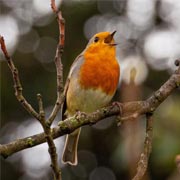 The return of many of the UK’s favourite birds is another wonderful sign that spring has arrived and winter is over. While some birds, including robins, may stay during winter, others will have migrated to warmer places, perhaps thousands of miles away. Once they return to the UK, children will be able to watch out for them and listen out for more birdsong. Early mornings and sunsets are great times to hear them, particularly when the weather is calm, meaning their sounds travel more clearly. For example, tiny wrens have an incredible and very melodic set of sounds. Robins are also beautiful to listen to. Thrushes sometimes sing at the tops of trees at dusk too, and that’s also wonderful to hear. Encourage children to watch and listen out for other birds too, for example, blackbirds, starlings, doves, blue tits, great tits and occasionally more rarely-seen birds like goldcrests.
The return of many of the UK’s favourite birds is another wonderful sign that spring has arrived and winter is over. While some birds, including robins, may stay during winter, others will have migrated to warmer places, perhaps thousands of miles away. Once they return to the UK, children will be able to watch out for them and listen out for more birdsong. Early mornings and sunsets are great times to hear them, particularly when the weather is calm, meaning their sounds travel more clearly. For example, tiny wrens have an incredible and very melodic set of sounds. Robins are also beautiful to listen to. Thrushes sometimes sing at the tops of trees at dusk too, and that’s also wonderful to hear. Encourage children to watch and listen out for other birds too, for example, blackbirds, starlings, doves, blue tits, great tits and occasionally more rarely-seen birds like goldcrests. Buds on trees and bushes can also be an interesting natural phenomenon for children to look out for in spring. Many are quite beautiful if you take the time to have a close look. Young children are indeed fascinated by several types of tree buds in early spring and perhaps the most attractive one to them is pussy willow. For them, the soft, fur-like buds of the pussy willow are an instant hit and something that really draws their attention. They really do feel furry and it’s almost as if they’re little creatures or kittens paws — quite a magical thing for any child to look out for in spring!
Buds on trees and bushes can also be an interesting natural phenomenon for children to look out for in spring. Many are quite beautiful if you take the time to have a close look. Young children are indeed fascinated by several types of tree buds in early spring and perhaps the most attractive one to them is pussy willow. For them, the soft, fur-like buds of the pussy willow are an instant hit and something that really draws their attention. They really do feel furry and it’s almost as if they’re little creatures or kittens paws — quite a magical thing for any child to look out for in spring! Catkins are also fascinating. Their little dangling fronds almost look like yellow caterpillars, so this is another type of spring occurrence to draw children’s attention to. From such attention, they can be taught lessons about pollen, seeds, nectar and the circle of life.
Catkins are also fascinating. Their little dangling fronds almost look like yellow caterpillars, so this is another type of spring occurrence to draw children’s attention to. From such attention, they can be taught lessons about pollen, seeds, nectar and the circle of life.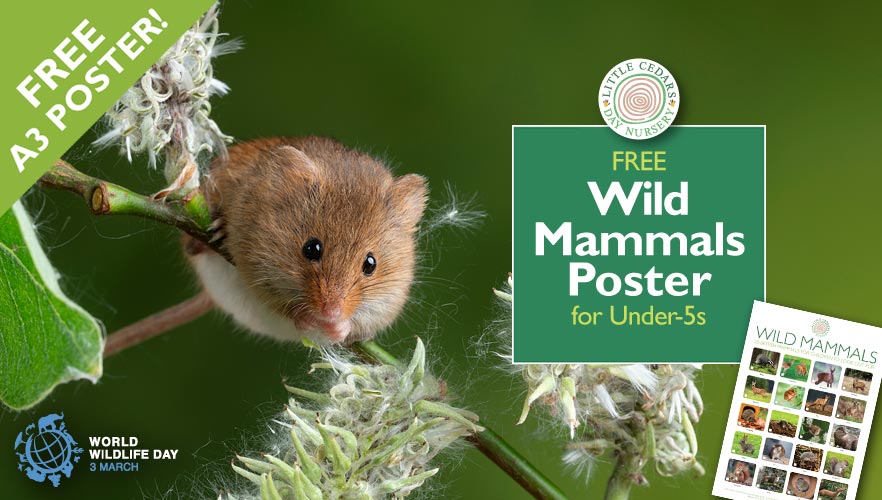
 Getting children interested in nature, and spending time around it, is extremely good for them as we’ve reported before —
Getting children interested in nature, and spending time around it, is extremely good for them as we’ve reported before — 